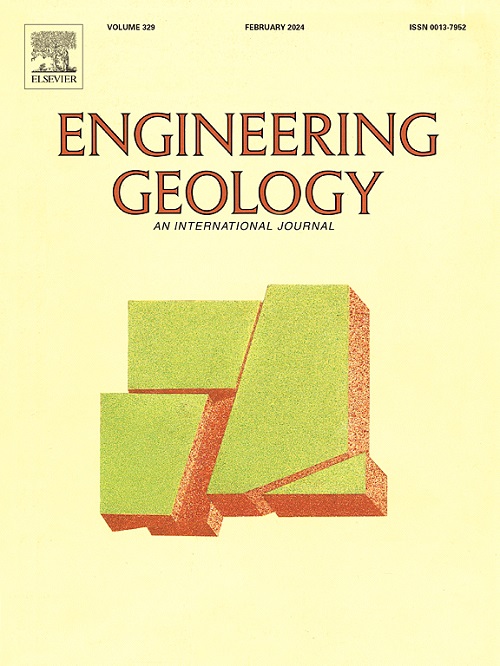Evaluating the thresholds for predicting post-earthquake debris flows: Comparison of meteorological, hydro-meteorological and critical discharge approaches
IF 6.9
1区 工程技术
Q1 ENGINEERING, GEOLOGICAL
引用次数: 0
Abstract
Post-earthquake debris flows pose significant hazards in mountainous regions following large seismic events. Evaluating the thresholds for predicting the occurrence of these flows is crucial. However, the absenting of comparison for different predicting methods hampers progress in improving and updating predictions for debris flows. In this study, based on on-site measurements of post-earthquake debris flows in an active catchment during the first year following the 2022 Luding Ms6.8 earthquake, 30 debris-flow events were identified and observed. We established and compared three distinct methods—namely, the meteorological approach, the hydro-meteorological approach, and the critical discharge approach for predicting the occurrence of post-earthquake debris flows. Additionally, we introduced a factor called absolute energy to improve the accuracy of the traditional meteorological approach. Absolute energy is defined as the sum of squared values within a time series. Our findings indicate that the hydro-meteorological model outperforms others in predicting post-earthquake debris flows, whereas the meteorological approaches especially the intensity–duration (I–D) thresholds exhibit suboptimal performance. Furthermore, the updated meteorological model incorporating absolute energy demonstrates improved predictive capability compared to traditional meteorological approaches like intensity–duration (I–D) thresholds. We argue that this comparative analysis will aid in selecting the suitable method for predicting post-earthquake debris flows.
评估预测震后泥石流的临界值:气象、水文气象和临界排放方法的比较
大地震发生后,震后泥石流会对山区造成严重危害。评估预测这些泥石流发生的阈值至关重要。然而,由于缺乏对不同预测方法的比较,阻碍了对泥石流预测的改进和更新。在本研究中,基于 2022 年泸定 Ms6.8 级地震后第一年在一个活跃集水区对震后泥石流的现场测量,确定并观测了 30 次泥石流事件。我们建立并比较了三种预测震后泥石流发生的不同方法,即气象方法、水文气象方法和临界排泄方法。此外,我们还引入了一个称为绝对能量的因子,以提高传统气象方法的准确性。绝对能量的定义是时间序列中的平方值之和。我们的研究结果表明,水文气象模型在预测震后泥石流方面优于其他模型,而气象方法,尤其是强度-持续时间(I-D)阈值则表现不佳。此外,与烈度-持续时间(I-D)阈值等传统气象方法相比,包含绝对能量的最新气象模型显示出更强的预测能力。我们认为,这种比较分析将有助于选择合适的方法来预测震后泥石流。
本文章由计算机程序翻译,如有差异,请以英文原文为准。
求助全文
约1分钟内获得全文
求助全文
来源期刊

Engineering Geology
地学-地球科学综合
CiteScore
13.70
自引率
12.20%
发文量
327
审稿时长
5.6 months
期刊介绍:
Engineering Geology, an international interdisciplinary journal, serves as a bridge between earth sciences and engineering, focusing on geological and geotechnical engineering. It welcomes studies with relevance to engineering, environmental concerns, and safety, catering to engineering geologists with backgrounds in geology or civil/mining engineering. Topics include applied geomorphology, structural geology, geophysics, geochemistry, environmental geology, hydrogeology, land use planning, natural hazards, remote sensing, soil and rock mechanics, and applied geotechnical engineering. The journal provides a platform for research at the intersection of geology and engineering disciplines.
 求助内容:
求助内容: 应助结果提醒方式:
应助结果提醒方式:


